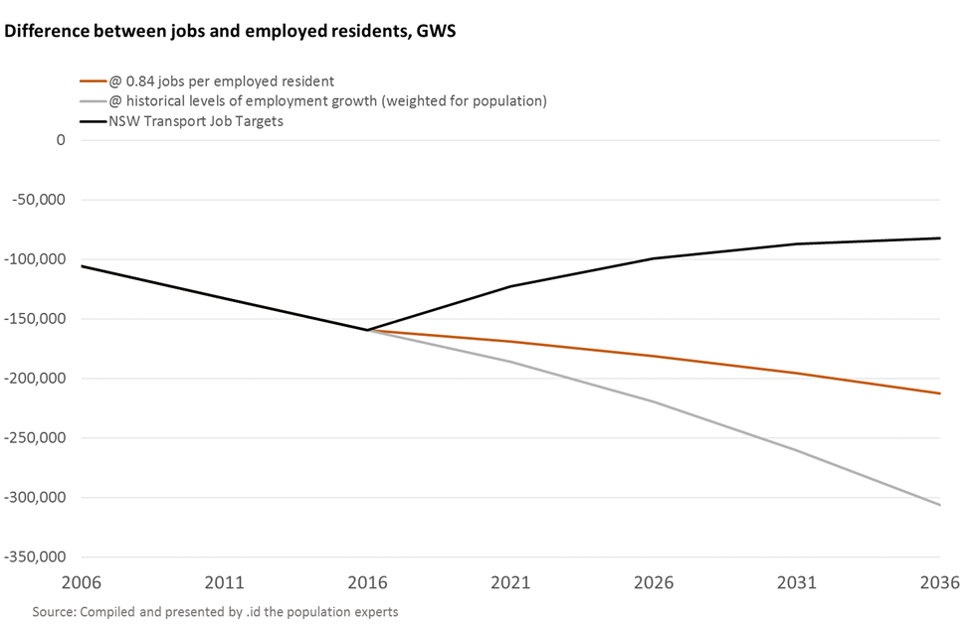The Western Sydney University engaged .id to develop small area population, labour force and employment projections for the Greater Western Sydney region. These projections were required to understand the impact of different urban forms (i.e. distribution of population and jobs) on the performance of the transport network in 2040+.
The chart below is a snapshot from our analysis. It summarises our jobs intensity analysis and we call it the witch’s broom.
This chart shows the Western Sydney job deficit challenge – the difference between the number of local jobs and the number of resident workers. Three scenarios are presented:
- The bottom branch uses historical employment trends and extrapolates these forward to 2036. If these business-as-usual trends continue, Western Sydney ends up with a jobs deficit of 306,063.
- The middle branch uses the ratio of 0.84 jobs per resident worker (the ratio estimated at 2014) to estimate the future deficit. Under this scenario, the region’s job deficit surpasses 200,000 by 2036.
- The upper branch is based on the aspirational ratio of 0.94, based on employment forecasts produced by the NSW Bureau of Transport Statistics. This is the only branch where new jobs growth claws back the region’s jobs deficit.

Our projections demonstrate that if business-as-usual continues for the next twenty years, Western Sydney faces a jobs deficit of 306,063 and a daily worker outflow of 492,521. We conclude that major investment is required for Western Sydney to achieve stronger employment outcomes, take the pressure off the transport network, and provide opportunities for residents to work closer to home.
The analysis was underpinned by .id’s independent state-wide population forecasts. Called Small Area Forecast information (SAFi), these forecasts are extremely granular and show you where growth is occurring across regions, suburbs and neighbourhoods right down to city blocks.
Using SAFi as a base .id provided technical analysis on population and economic development in Western Sydney. This included an analysis of population and dwelling growth rates, spatial employment trends and labour force participation rates.
We combined this with our understanding of urban economic issues such as agglomeration, spatial inequality pressures, strength in densification and the importance of investment in place and complementary infrastructure on the economic performance of regions.
Our analysis clearly demonstrates that the gap between jobs and employed residents in Western Sydney has grown significantly over the last decade and that this trend needs to be reversed. The findings were recently presented in the report ‘Addressing Western Sydney’s Job Slide’ authored by Professor Phillip O’Neill, Director of the Centre for Western Sydney, Western Sydney University.
.id is a team of population experts, who use a unique combination of online tools and consulting to help organisations decide where and when to locate their facilities and services, to meet the needs of changing populations. Access our free demographic resources here.
Learn more about how we can help with economic analysis, modelling and strategic planning.










